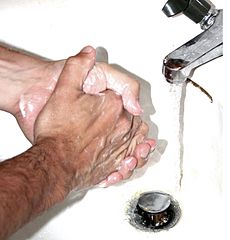Visit and Join the WeHeal OCD Community
For more information, see: MayoClinic | Wikipedia

Obsessive–compulsive disorder (OCD) is a mental disorder where people feel the need to check things repeatedly, have certain thoughts repeatedly, or feel they need to perform certain routines repeatedly. People are unable to control either the thoughts or the activities. Common activities include hand washing, counting of things, and checking to see if a door is locked. Some may have difficulty throwing things out. These activities occur to such a degree that the person’s daily life is negatively affected. Often they take up more than an hour a day. Most adults realize that the behaviors do not make sense. The condition is associated with tics, anxiety disorder, and an increased risk of suicide.
The cause is unknown. There appears to be some genetic components with identical twins more often affected than non-identical twins. Risk factors include a history of child abuse or other stress inducing event. Some cases have been documented to occur following infections. The diagnosis is based on the symptoms and requires ruling out other drug related or medical causes. Rating scales such as Yale–Brown Obsessive Compulsive Scale can be used to assess the severity. Other disorders with similar symptoms include: anxiety disorder, major depressive disorder, eating disorders, tic disorders, and obsessive–compulsive personality disorder.
Treatment for OCD involves the use of behavioral therapy and sometimes selective serotonin reuptake inhibitors (SSRIs). The type of behavior therapy used involves increasing exposure to what causes the problems while not allowing the repetitive behavior to occur. Atypical antipsychotics such as quetiapine may be useful when used in addition to an SSRI in treatment-resistant cases but are associated with an increased risk of side effects. Without treament the condition often lasts decades.
Obsessive–compulsive disorder affects about 2.3% of people at some point in their life. Rates during a given year are about 1.2% and it occurs worldwide. It is unusual for symptoms to begin after the age of thirty five and half of people develop problems before twenty. Males and females are affected about equally. In English the phrase obsessive–compulsive is often used in an informal manner unrelated to OCD to describe someone who is excessively meticulous, perfectionistic, absorbed, or otherwise fixated.
Visit and Join the WeHeal OCD Community
For more information, see: MayoClinic | Wikipedia
WeHeal is very grateful to our valued sources of information which include Wikipedia, WebMD, ClinicalTrials.gov, Cancer.gov, Infoplease, and the US CDC (Center for Disease Control).